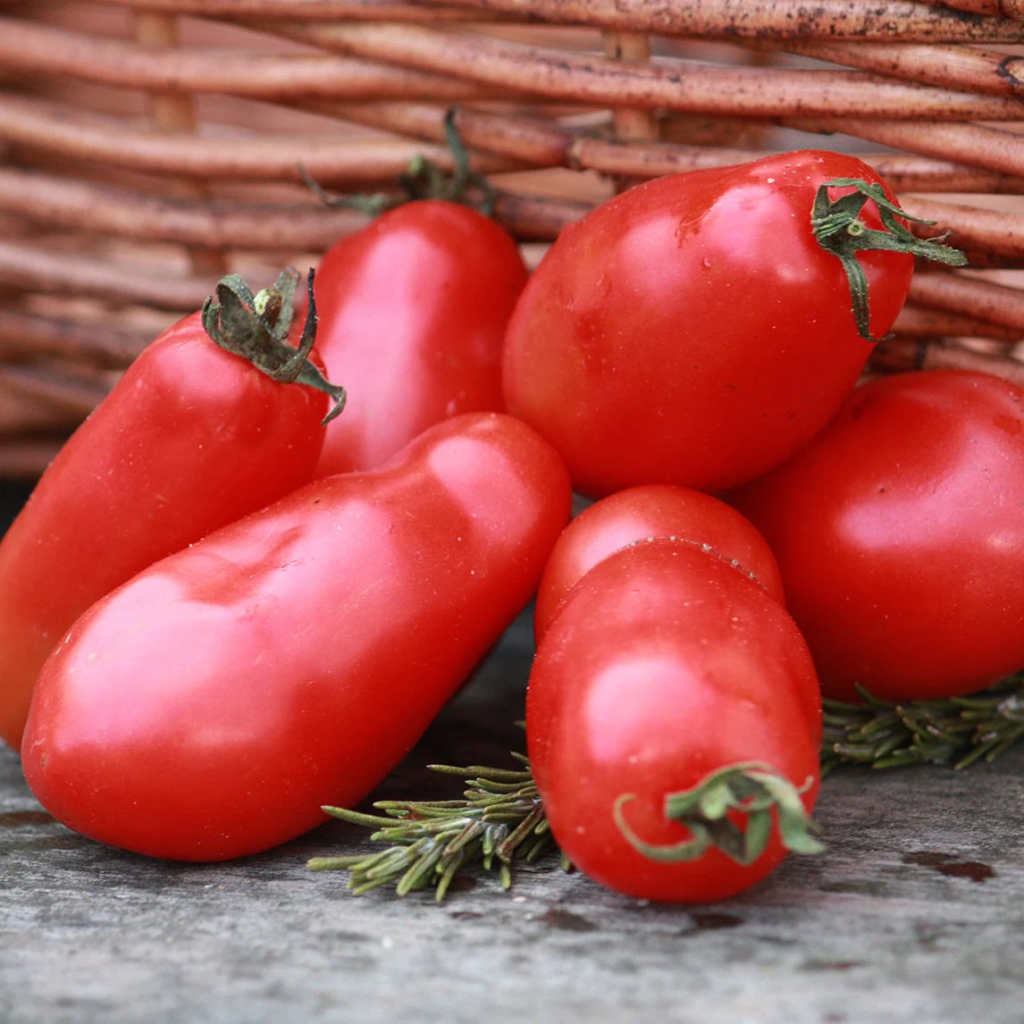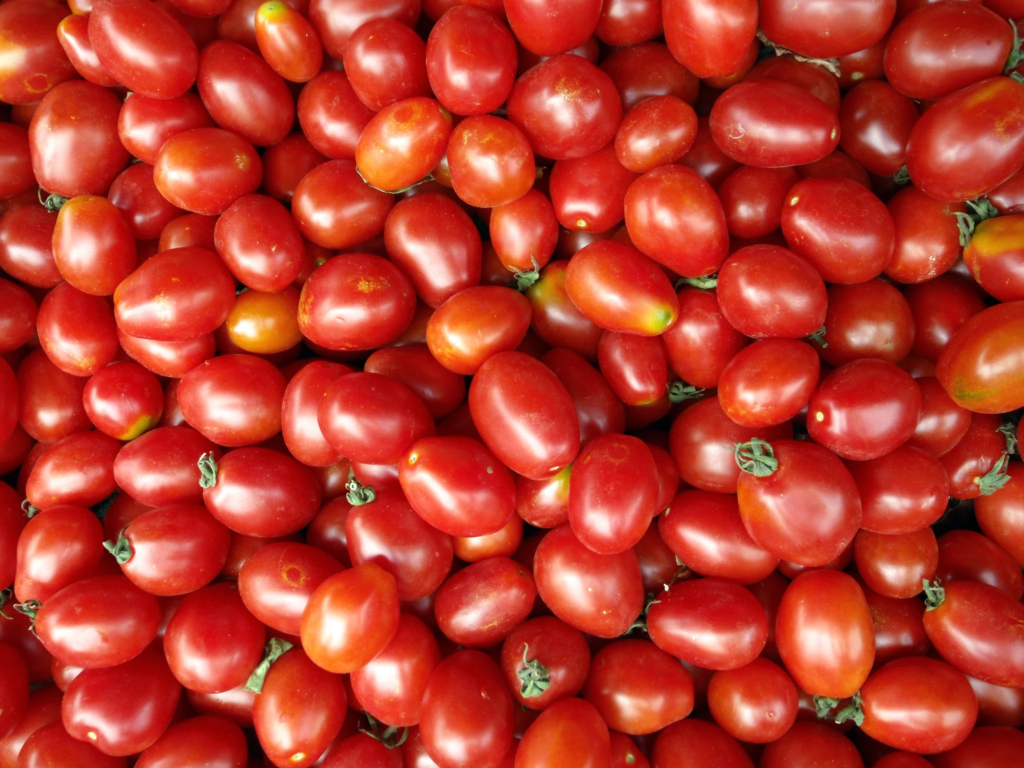Tomatoes, a staple in numerous cuisines around the world, come in different shapes, sizes, and flavors. They serve as the backbone for a variety of dishes, particularly tomato sauce. If you want to make a flavorful tomato sauce at home, the choice of tomato variety can significantly affect the outcome. The best tomatoes for sauce typically have a rich flavor and lower water content, resulting in a thicker, more flavourful sauce. Here are the top 10 tomato varieties for making tomato sauce along with the key features and growing guide for each variety:
1. San Marzano

San Marzano tomatoes are a variety of plum tomatoes that are considered by many to be the best tomatoes for pasta sauce. Native to Italy, they are characterized by their elongated shape. They have a sweet taste with a hint of acidity, making them great for sauces.
Growing Guide: Plant the San Marzano seeds indoors about six weeks before the last expected frost. They prefer a warm climate and well-drained soil enriched with organic matter. Water regularly but avoid water logging as it can lead to root diseases. Prune the plant to encourage the growth of the fruit rather than the leaves.
2. Roma

Roma or paste tomatoes are often used for tomato sauce due to their dense, meaty texture. The fruit is elongated, like the San Marzano, but it’s more rounded and plum-like. Roma tomatoes have less juice and seeds, which means more tomato flesh to contribute to the robust sauce.
Growing Guide: Roma tomatoes grow best in full sun, in fertile and well-drained soil. Start seeds indoors 6-8 weeks before the last spring frost. Make sure the plants are watered regularly, and use a tomato fertilizer to nurture their development.
3. Amish Paste

Amish Paste tomatoes are an heirloom variety that originally hails from the Amish community in the United States. They are an indeterminate variety, which means they continue to grow until frost kills them. Known for their slightly sweet flavor and meaty flesh, Amish Paste tomatoes are excellent for sauces.
Growing Guide: Amish Paste tomatoes are slow starters, so it’s best to start seeds indoors at least six to eight weeks before the last expected frost. Once established, they prefer full sun and well-drained soil. Regular watering is essential, but make sure not to overwater to avoid root rot.
4. Ace 55

Ace 55 is a variety of tomatoes that are known for their resistance to diseases. They produce large, red, smooth, and juicy tomatoes with a low acid content, making the sauce sweeter than other varieties.
Growing Guide: Ace 55 tomatoes should be planted in a location that gets full sunlight. The soil should be well-drained and well-composted before planting. Make sure to water the plants regularly and provide some form of support as the plants grow.
5. Black Krim

Black Krim tomatoes are heirloom tomatoes with a notably rich flavor profile. The tomatoes have a dark, almost black color when ripe. This variety produces a sauce with a depth of flavor that can’t be matched by standard red tomatoes.
Growing Guide: Black Krim tomatoes are indeterminate, so they require a lot of space. Start seeds indoors before the last spring frost. These plants prefer full sun and fertile, well-drained soil. Water regularly and stake the plants to provide support.
6. Big Mama

Big Mama tomatoes, as their name suggests, are large-sized tomatoes ideal for making sauce. They are a hybrid variety, producing significantly meaty and juicy tomatoes. Big Mama tomatoes are resistant to several common tomato diseases.
Growing Guide: Start Big Mama seeds indoors about six to eight weeks before the last spring frost. Provide full sun, and moderate temperatures, and avoid having the soil become too dry or too wet.
7. Principe Borghese

Principe Borghese tomatoes are small plum tomatoes with very thick flesh and fewer seeds. They are known to have a classic tart tomato flavor and produce a rich, thick sauce.
Growing Guide: This variety is heat tolerant and perfect for areas with dry, hot summers. Start seeds indoors about six to eight weeks before the final frost is expected. Provide full sun and well-drained soil. Watering should be regular but not excessive.
8. Viva Italia

Viva Italia is a hybrid variety known for its disease resistance and the prolific yield of meaty, vibrant red tomatoes. They are ideally sized for cooking and making sauces.
Growing Guide: Sow Viva Italia tomato seeds indoors six weeks before the last frost date. Full sun and well-drained, nutrient-rich soil are optimal for this variety. Providing support through staking or caging is recommended.
9. La Roma

La Roma tomatoes, as the name implies, are a great variety for making sauces and pastes. They are similar to Roma tomatoes but are larger and have more durable skin.
Growing Guide: Sow La Roma seeds indoors six to eight weeks before last spring frost. Transplant them outdoors when the danger of frost is over. Plant them in full sun, in well-drained soil rich in organic matter.
10. Margherita

The Margherita tomato is a hybrid variety that produces a bountiful crop of massive, meaty fruit. They have a vibrant red color and are known for their excellent flavor and thick flesh, excellent for sauces.
Growing Guide: Start Margherita seeds indoors 6-8 weeks before the last frost. The soil temperature should be kept consistently warm for germination. Once safely past frost and when the seedlings are about 3 inches tall, transplant them into the garden. Margherita Tomatoes prefer full sun and fertile, well-drained soil.
In Conclusion
Different tomato varieties offer unique flavors and qualities ideal for making a delicious tomato sauce. By choosing the right type from these top 10 recommendations such as San Marzano, Roma, or Amish Paste – you can create a sauce with the desired thickness, sweetness, acidity, and depth of flavor. Your choice depends on your taste preference and growing conditions. With appropriate care and attention to their specific growing needs, these tomato cultivars can provide a fresh, homegrown ingredient for your culinary endeavors. There’s no greater satisfaction than cooking with tomatoes grown in your own garden.


Leave a Reply